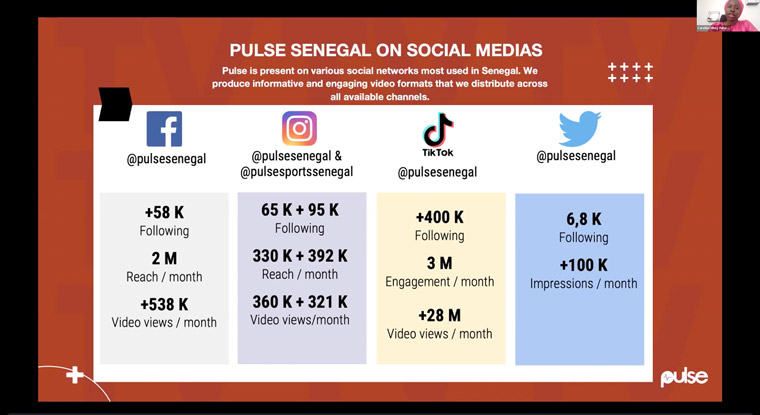Six media organisations in Africa have shared insights on their growth strategies and technological developments driving audience and advertising in their companies at the recent two-day regional summit by the International News Media Association (INMA).
The virtual INMA Africa News Media Summit, held July 28-29, attracted 311 delegates from 38 countries supported by the Google News Initiative,
The media houses included Business Day in Nigeria, Independent Media in South Africa, Media 24’s City Press in South Africa, Monitor Publications in Uganda, Nation Media Group in Kenya, New Times in Rwanda, Stears in Nigeria, and Pulse Senegal.
The key takeaways from their presentation:
Newsrooms
Nigeria’s Business Day shared the critical “reasons why” newsrooms must change their cultures: the need for agility, the 24-hour news cycle, the abundance of data, the need for continuous experimentation, the rise in reader revenue models, the emergence of multimedia storytelling, and more.
In Uganda, Monitor Publications is focused on acquiring and retaining good and experienced journalists, yet is realistic about the task at hand: low pay, expanding demand for communications, and gender pitfalls. The risk of being a journalist isn’t quite worth the financial reward, the thrill is gone, yet social media continues to shine. While the digital dinosaurs are gone from newsrooms, those newsrooms remain devoid of tech-savviness/depth.
Nigeria’s Stears may have been the most intriguing case study for one reason: Its sheer lack of a legacy newsroom. They have created a newsroom from scratch with journalists sharing the stage with data, product, engineering, and marketing professionals. They take a product approach to strategy and are constantly focused on company objectives. With an embrace of data and information worth paying for, their content and business strategies are connected.
Audience engagement
Pulse Senegal is creatively using social media to expand its footprint. Faced with a huge youth audience, Pulse’s strategy is to “inform and entertain” with social media that has fun facts, inspirational stories, street video interviews, reader portraits, and news. They co-create content with influencers.
The New Times in Rwanda is pushing back against economic headwinds with a combination of products and marketing: job board, social media, podcast, flash briefings, e-paper, and video desk. They have seen engagement grow, new market segments opened up, subscriptions tripled, and finances are up.
Nation Media Group in Kenya weaved its Kusi Ideas Festival into a broader strategy that helped build relationships with policy influencers via thought leadership and created an alternative revenue stream with a regional approach.
READ ALSO: 13 key survival questions media owners, managers must answer
Advertising campaigns
Media24’s City Press is empowering readers with its “Money Makeover” native advertising campaign. They are enabling Absa’s clients to plan for and attain financial freedom. In its sixth year, the native campaign has become a staple in City Press’ annual calendar – positioning Absa as the bank that cares. The campaign fits well with strong content that connects with audiences via authentic messaging.
Also in South Africa, Independent Media’s collaborative added-value campaign took Chicken Licken away from their traditional TV/outdoor investments – part of a broader strategy to grow advertising segments. Innovation and creativity are keys to driving revenue growth and social media engagement.
Global and strategic developments
INMA CEO Earl Wilkinson talked about the emergence of the modern media company’s playbook: subscriptions, product, newsroom innovation, data, advertising, and people/talent. Subscription bundles and surfing event waves are on the rise, while product is pointing to app innovation and changing how work gets done. While newsrooms get into the business of news, data is central to growth strategy and an indicator of cultural maturity. Successful digital advertising savviness is increasingly about knowing where to focus people’s sales vs. machine sales. And he recommended when looking to acquire and retain young digital talent, focus on the journalistic mission.
South Africa’s Project Goliath has joined other national consortia to navigate the regulatory, legislative, and settlement world with the Big Tech platforms. With global regulatory hotspots like Canada, Australia, New Zealand, France, and Denmark, the very competitive South African publishers have banded together, appointed competition law specialists, and are working to front inquiries and draft legislation.
IC Publishers – and their pan-African titles such as African Business, African Banker, and New African – is managing the digital transition of their business and focused on new product development and growth. The company has grown correspondents and thought leadership events in tandem with its advertisers who have taken a regional approach seeking dominance in markets across Africa.
“INMA’s ability to bring global insights fused with regional best practices and case studies to the region has really made this summit an important event for Africa,” said Doreen Mbaya, producer of the INMA Africa summit. “Our attendees really appreciated the fresh focus on newsrooms, as well as the discussions around Big Tech. ”


